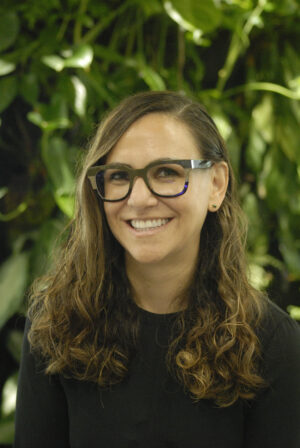80 Acres Farms incorporates food safety into design from the ground up
Food safety is a building block of controlled environment agriculture (CEA). 80 Acres Farms was built on the premise that we could leverage CEA’s design advantages to deliver safe foods.
We want to give consumers fresh, high-quality produce year-round. To accomplish that, we must have a steady, food-safe supply.

Because CEA technology is evolving, we can influence food safety through our farm design. We build food safety and sanitary design concepts into how we grow, pack and deliver food. The farm we built two years ago was our most high-tech ever. Two years later, we have learned so much that our next farm will look very different.
Coming from traditional agriculture to CEA, I now think about risk differently. The food safety hazards are similar, but how they happen in CEA is different. Things that are traditionally separated by miles — from seed to finished product — we have under one roof. So we incorporate learnings from traditional food and produce industries into our farms. As a result, we treat our farms more like processing facilities than traditional farms.
We have all the usual food-safety programs processing facilities do. For example, we have strong manufacturing practices and certifications, and we use traffic patterns and color-coding to prevent cross-contamination between different risk areas. We also try to incorporate these practices on the growing side so that our processes are more homogenous.
There is still a lot we don’t know. We’re still learning how the food safety risks common to outdoor farming translate to our indoor operations — how high the risks are to our operations, how those risks go throughout our process and how to better control them.
So we participate in Center for Produce Safety (CPS) to be part of an ecosystem of knowledge that will help us get where we need to go.
A treasure trove of research
CPS’s 2023 Research Symposium, June 20-21 in Atlanta, will feature reports on 13 finished research projects and updates on 14 ongoing projects. Small breakout sessions will follow, so we can discuss findings with researchers and industry colleagues. These breakouts are rare chances to ask questions, have frank conversations and explore impacts for our businesses. A general session will explore a timely topic and its relevance to fresh produce food safety: Last year, we were surprised by what we learned from the airline industry’s safety overhaul.
I attend the symposium every year, even though as a member of CPS’s Technical Committee I help guide and follow CPS research year-round. I attend to hear researchers’ final reports and to learn how my colleagues react, to talk with them about how they plan to apply what they’ve learned, and to bounce ideas off them. I’ve had conversations that have changed how I see something and how I practice produce safety. These interactions are value-added.
2 projects to watch
I am watching two CPS research projects in particular. While CEA-centric, they are relevant across the fresh produce supply chain. They also demonstrate how CPS is able to react rapidly to a changing world.
University of Arkansas’ Kristen Gibson is looking into what we know — and need to know — about microbial risks in indoor leafy-green production. This two-year project will gather current science to identify best practices proven to enhance CEA-grown leafy greens safety. Researchers will interview U.S. CEA operators to benchmark current practices and food-safety knowledge gaps. Gibson’s team will explore questions including, what information is out there? How can we use that? What is the industry doing right, and maybe not perfect? Where are the gaps? Where do we need help?
CPS researcher Ana Allende’s two- year project seeks to understand where food safety risks occur in CEA. Her team will study how pathogens of concern — Salmonella spp. and Listeria monocytogenes, specifically — move from one place to another, and where in the process we find risk — whether that’s inputs, water or equipment. Two major Spanish CEA growers are collaborating with Allende; industry input is a longstanding hallmark of CPS research.
To learn more about these and other CPS research projects, visit www. centerforproducesafety.org/funded- research-projects.php.
The Center for Produce Safety helps 80 Acres Farms feel confident that we are focusing on the right areas of fresh produce food safety and are leveraging the latest tools to live up to indoor farming’s promise of delivering safe produce. CEA is a small segment of the fresh produce industry; to be part of something larger benefits CEA.
CPS is also important to you. CPS exists to conduct usable research that can improve produce safety and to get industry involved and using this knowledge. We all want our consumers to trust us to deliver safe produce. For more information, check out resources available at www.centerforproducesafety.org, and join us for the Research Symposium in Atlanta in June.
Monica Noble is director of quality and safety for 80 Acres Farms, an indoor producer of salad greens, microgreens, herbs, tomatoes and cucumbers in Hamilton, Ohio. She is a member of the Center for Produce Safety’s Technical Committee, which guides CPS’s produce-centric food safety research program.







